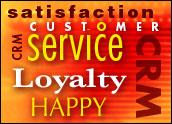
Just as technology has changed the landscape of corporate environments, it is predicted to transform how medicine is done, according to a recent survey.
The 2004 Most Wired Survey and Benchmarking Study was conducted by Hospitals & Health Networks, a publication put out by the American Hospital Association. After reviewing technology implementation at almost 1,300 hospitals, the publication chose the 100 most wired hospitals.
Although there was only room for 100 on the list, there is a growing trend at most hospitals toward integrating technology into their processes, said Alden Solovy, Hospitals & Health Networks’ Executive Editor.
He told CRM Buyer that health care consumers can expect to see major strides in technology at hospitals and other facilities in the coming years. “Information technology is at the vanguard today because it represents huge potential improvements for doctors, nurses, and their families.”
As further evidence, the federal government is preparing to unveil a plan on Wednesday aimed at getting more doctors and hospitals using electronic patient records and other technology.
Getting Wired
Hospitals & Health Networks has been doing similar surveys for the last six years. Solovy noted that the goal is to track the progress that hospitals are making in using IT, while providing a benchmark group of organizations for the health care field.
This year, the publication found that the “most wired” hospitals are focused on integrating technology into many different departments. For example, 90 percent provide access to patient medical records online, 87 percent provide online access to medical history and 90 percent have online radiology report views.
Solovy said that the use of technology at these hospitals is not surprising, since a facility that is open to integrating electronic-based information tends to put a great deal of focus into the effort.
“Top hospitals now have doctors and nurses dedicated to education and training in order to assure that the staff has the skills to actually use the technologies they implement,” said Solovy.
He added, “They are also using technology to connect directly into the patient’s home with Internet-enabled monitoring devices.”
Challenging Endeavor
Some hospitals that do not have technologies like electronic health records are also trying to integrate technology into their operations. Jonathan Anderson, director of IT at Fresno Heart Hospital, told CRM Buyer that the facility has been bringing in more laptops and putting more data into electronic form, but that many challenges still remain.
“Nurses are used to carrying clipboards, not rolling a laptop around on a cart,” he said. “There still aren’t enough options in terms of form factors. Most of the hurdles we’re seeing are with mobility and documentation.”
While the hospital works on the problem, other areas are getting beefed up with technology. “We use SAN technology for centralized storage of our imaging needs,” he said.
Another major challenge for Fresno as well as many other hospitals has been cost. As the government and individuals lament the slow rate of technology adoption at some facilities, budgets for equipment and training are not often expanded in response.
Fresno Heart Hospital’s network administrator, Paul Barlow, told CRM Buyer: “The biggest limit is cost. Technology is quite welcome here, just as it is at many hospitals, but what we implement depends on what we can afford.”
Bold New World
As hospitals do manage to find more funding, it is possible that they will move beyond just buying laptops and putting information online, and into more sophisticated applications like CRM.
A recent article in Health Data Management magazine noted that CRM is starting to have an impact on the field. It noted the implementation of CRM technology by Blue Cross Blue Shield of Montana, which resulted in 10 percent of its 14,000 monthly telephone calls shift to online resources.
It added that payer organizations are also using CRM to improve customer service and trim operating costs, and that interest in CRM is growing steadily.
With moves like these, and more health care organizations looking to get wired, Solovy is confident that the government’s plans will be well received.
“I believe in the power of IT to transform care,” he said. “So, I’m not surprised that there are doctors, nurses, patients, hospital execs, government officials and policy makers who agree.”






















































